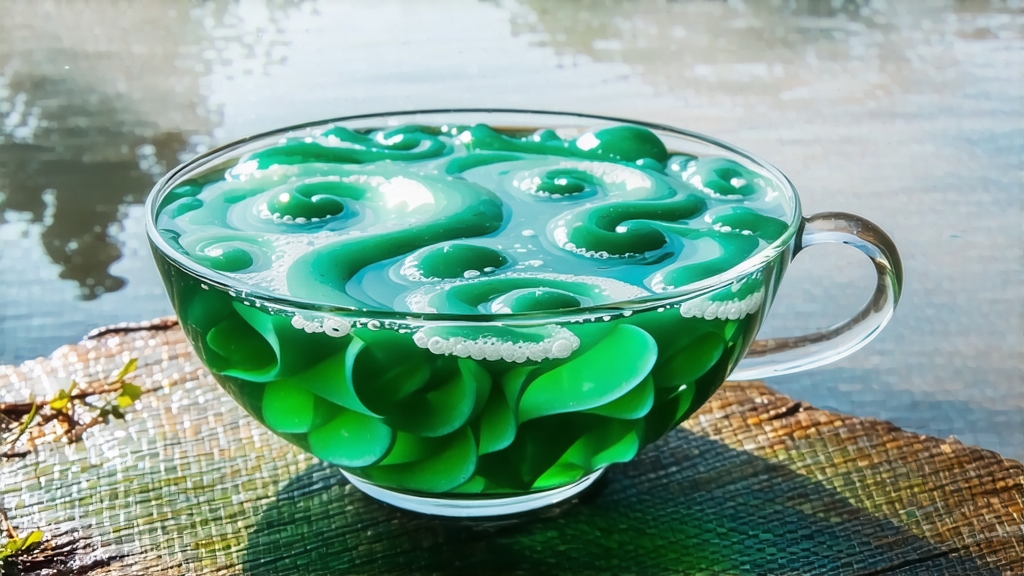
Tucked between the mist-laden loess hills of Dongting Mountain and the gentle ripples of Taihu Lake in Jiangsu Province, Biluochun—literally “Green Snail Spring”—has for three centuries been the quiet jewel of Chinese green tea. Foreign gazetteers once rendered its name as “Pi Lo Chun,” a phonetic echo that still surfaces in vintage catalogues, yet whatever the spelling the tea remains unmistakable: tiny, spiral-shaped buds the color of jade moss, exuding an aroma so fragrant that locals claim the leaves once perfumed an entire emperor’s garden.
Historical records first anchor Biluochun in the late Ming dynasty, when tea growers along the lake’s eastern rim noticed that certain spring shoots, so tender they could be pressed flat between two fingers, curled naturally into tight spirals during the kill-green stage. A 1699 county gazetteer describes the tea as “xia sha ren xiang”—“startlingly fragrant”—and credits a passing magistrate with presenting it to the Kangxi Emperor. The story may be apocryphal, but the imperial cachet stuck; by the Qianlong era the court demanded first-pick tribute lots delivered by canal within ten days of plucking, a logistical feat that required relay teams of runners and boatmen rowing through the night.
Today the appellation “Biluochun” is legally protected; only leaf plucked within a 120-square-kilometer core zone around Dongting’s East and West peaks may bear the name. Within that zone two broad styles emerge. “Mountain Biluochun,” grown above 200 m on weathered granite soils, yields a higher concentration of floral volatiles—linalool and geraniol peak at 3.2 mg per gram of dry leaf—giving a cup that suggests apricot blossom and fresh cream. “Lakeside Biluochun,” rooted in alluvial silt enriched by aquatic plant compost, carries a softer, bean-like sweetness reminiscent of steamed edamame. Purists further divide lots by harvest slot: pre-Qingming buds (before 5 April) offer the sharpest umami and a luminous jade liquor; the later Guyu pick (around 20 April) trades some delicacy for a rounder, nuttier body.
The crafting choreography has changed little since the eighteenth century. Pickers climb the terraces at dawn, plucking only the “flag-and-leaf” standard: an unopened bud still clasped by its infant leaf, no longer than 2.5 cm and weighing 0.3 g. Within two hours the harvest is carried in shallow bamboo trays to the village alleyways where master kill-green artisans await. They load 250 g of fresh leaf into a cast-iron wok pre-heated to 180 °C, then, with bare palms, flick and press the leaves against the metal for precisely 45 seconds. This initial high-temperature shock deactivates polyphenol oxidase, locking in the vivid chlorophyll that gives the tea its signature color. Immediately the temperature is dropped to 80 °C and the real shaping begins: fingers form a loose cage, rolling the buds along the wok’s wall in a spiral motion—three clockwise, two counter-clockwise—while the wrist trembles to keep the tips from breaking. After ten minutes the leaves have lost 70 % of their moisture and resemble tiny snails; they are transferred to a hemp-lined bamboo basket where they rest for thirty minutes, allowing internal moisture to migrate outward. A second, gentler firing at 60 °C finishes the drying and sets the curl. Veteran processors judge readiness by sound: when the leaves rustle like jade pendants in a silk pouch they are done. The entire cycle, from pluck to finished tea, spans no more than four hours—any longer and the fragile aromatics dissipate.
To unlock those aromatics in a Western kitchen, begin with water whose chemistry mirrors Taihu’s soft profile: 40–60 ppm total dissolved solids, a pH near 7. If your tap water is hard, run it through a charcoal filter or mix one part distilled to two parts tap. Heat to 75 °C—not the rolling boil often recommended for black teas—then pre-warm a 200 ml glass cha hai (pitcher) and three tulip-shaped tasting cups. Measure 3 g of tea, roughly one level tablespoon, letting the spirals tumble into the pre-warmed glass. The first infusion, 30 seconds, is